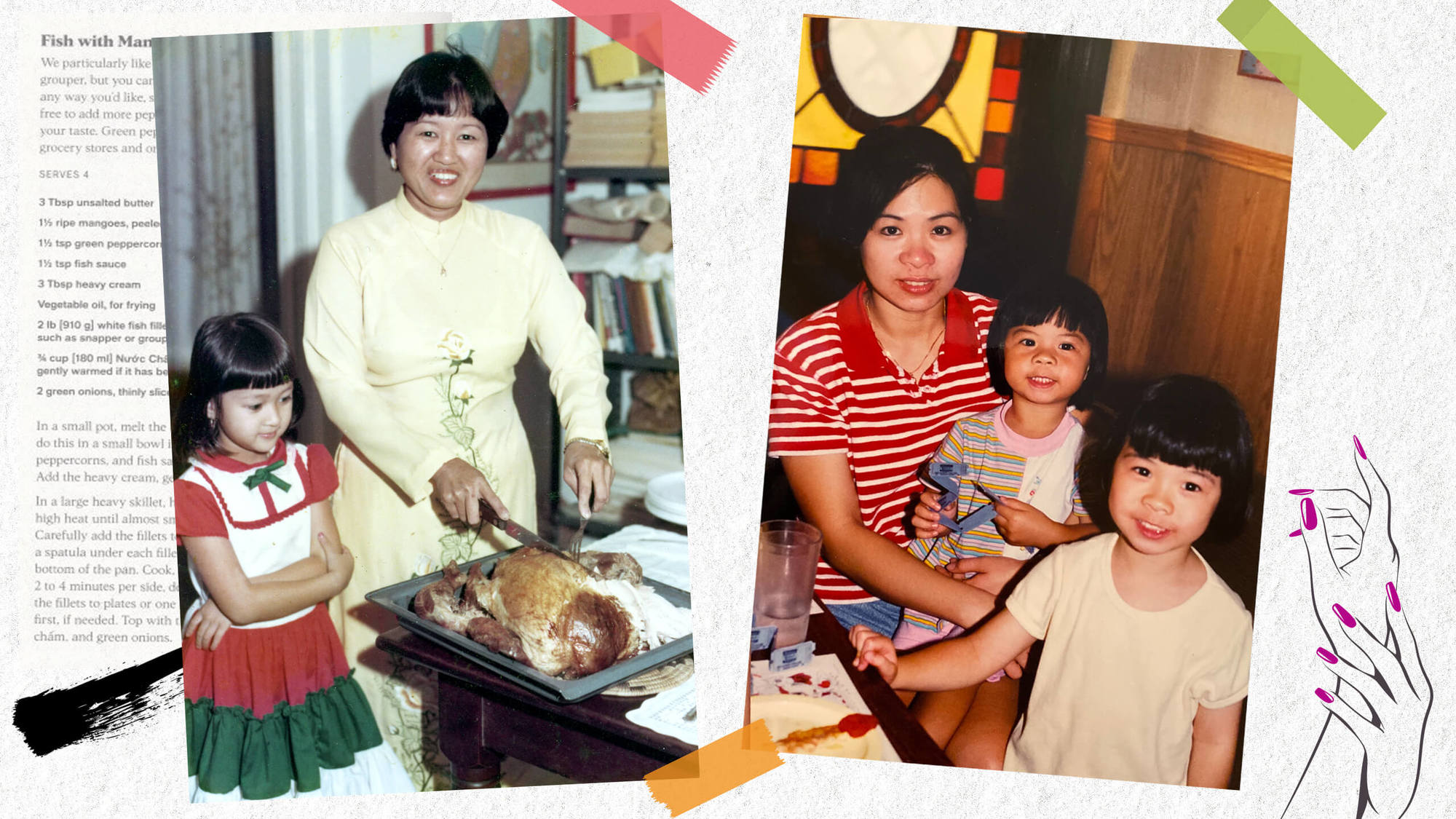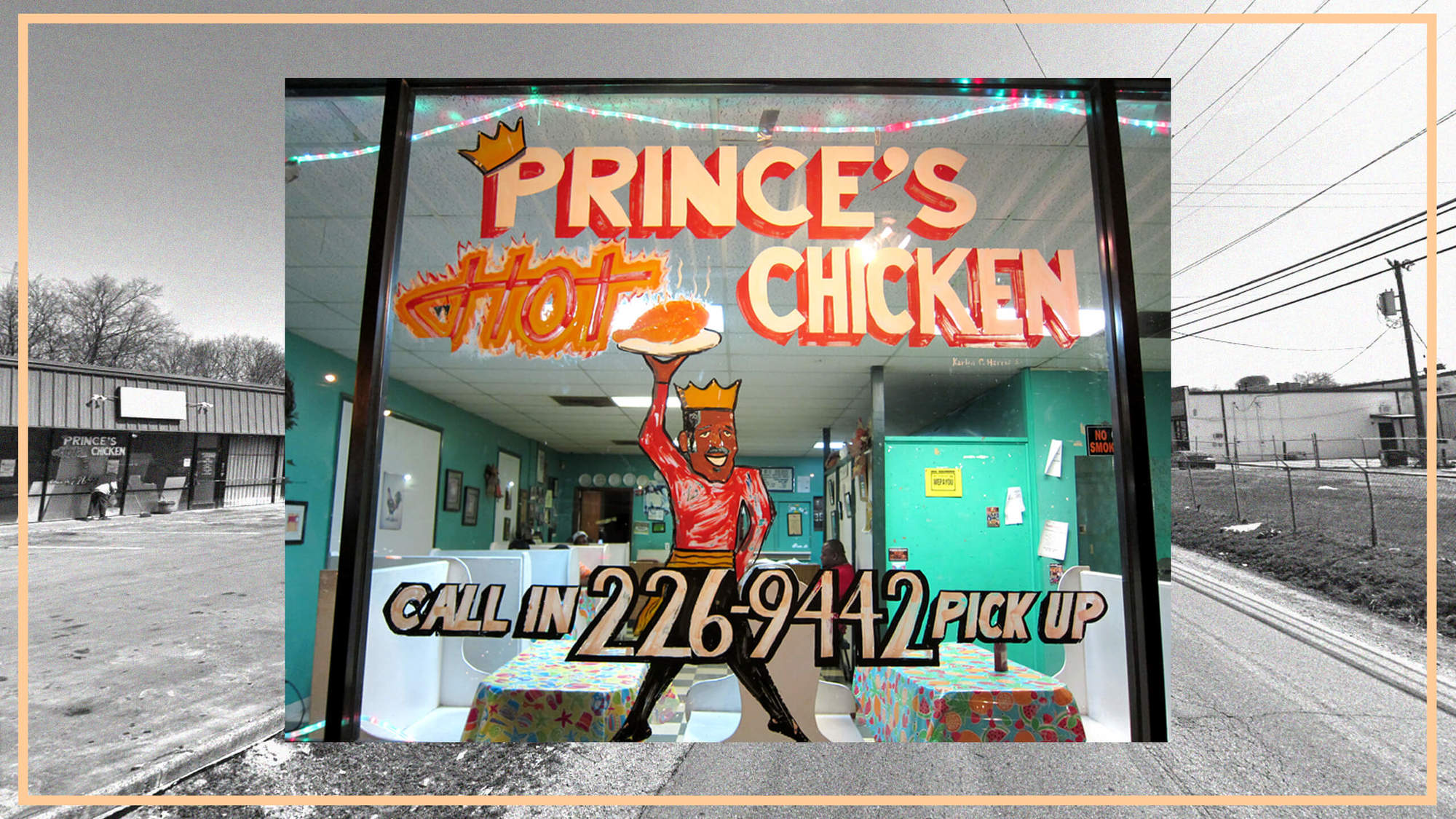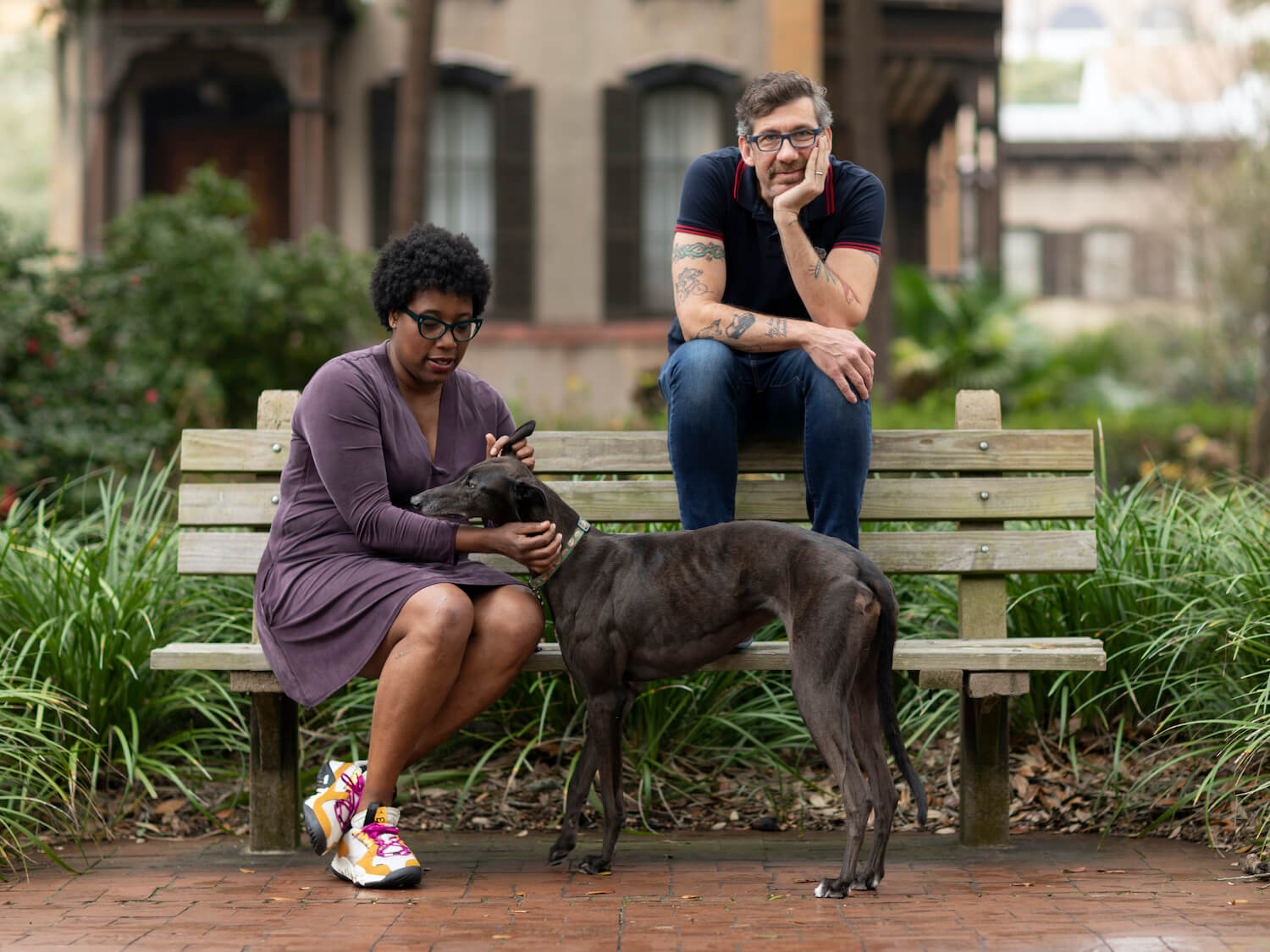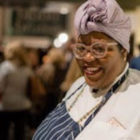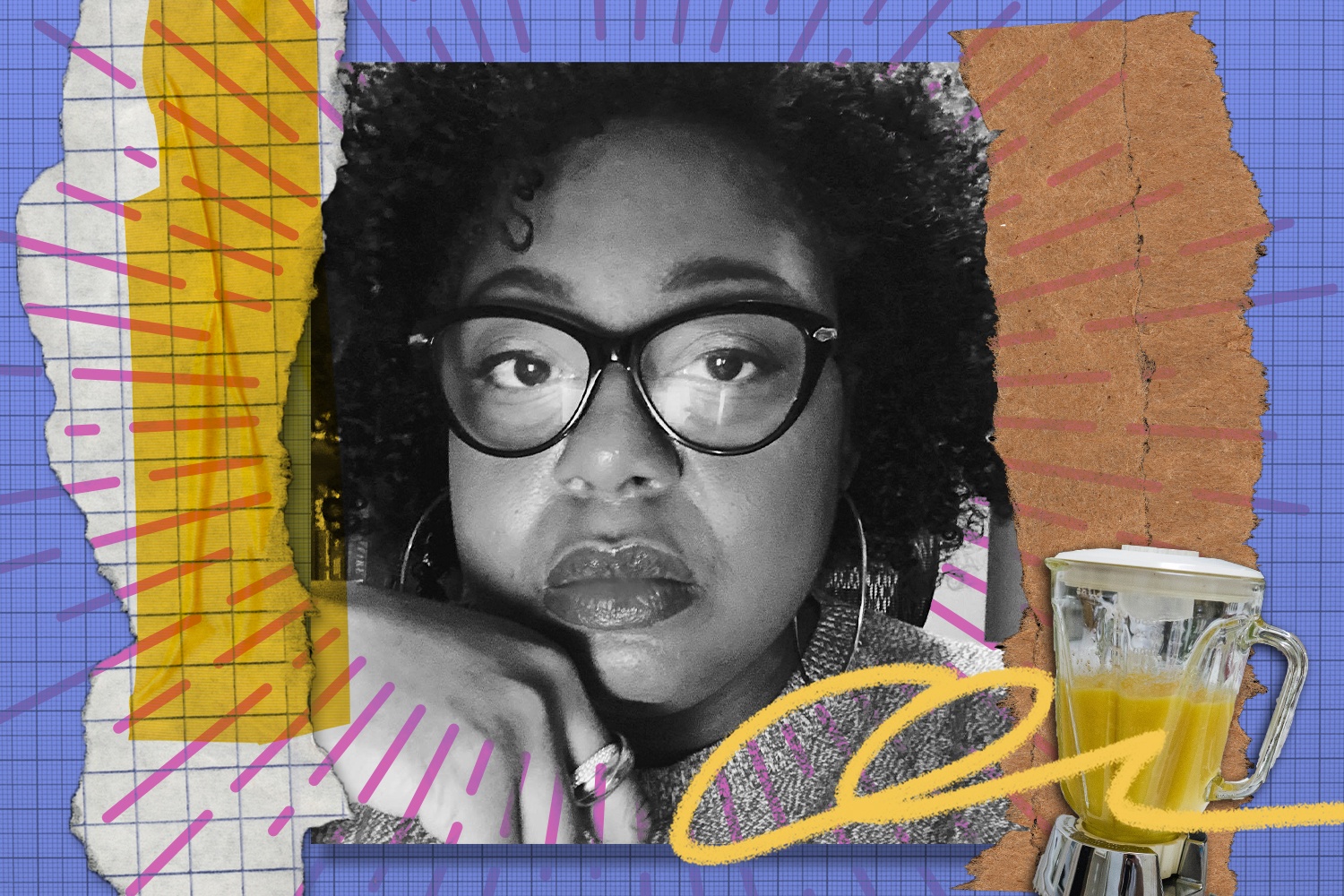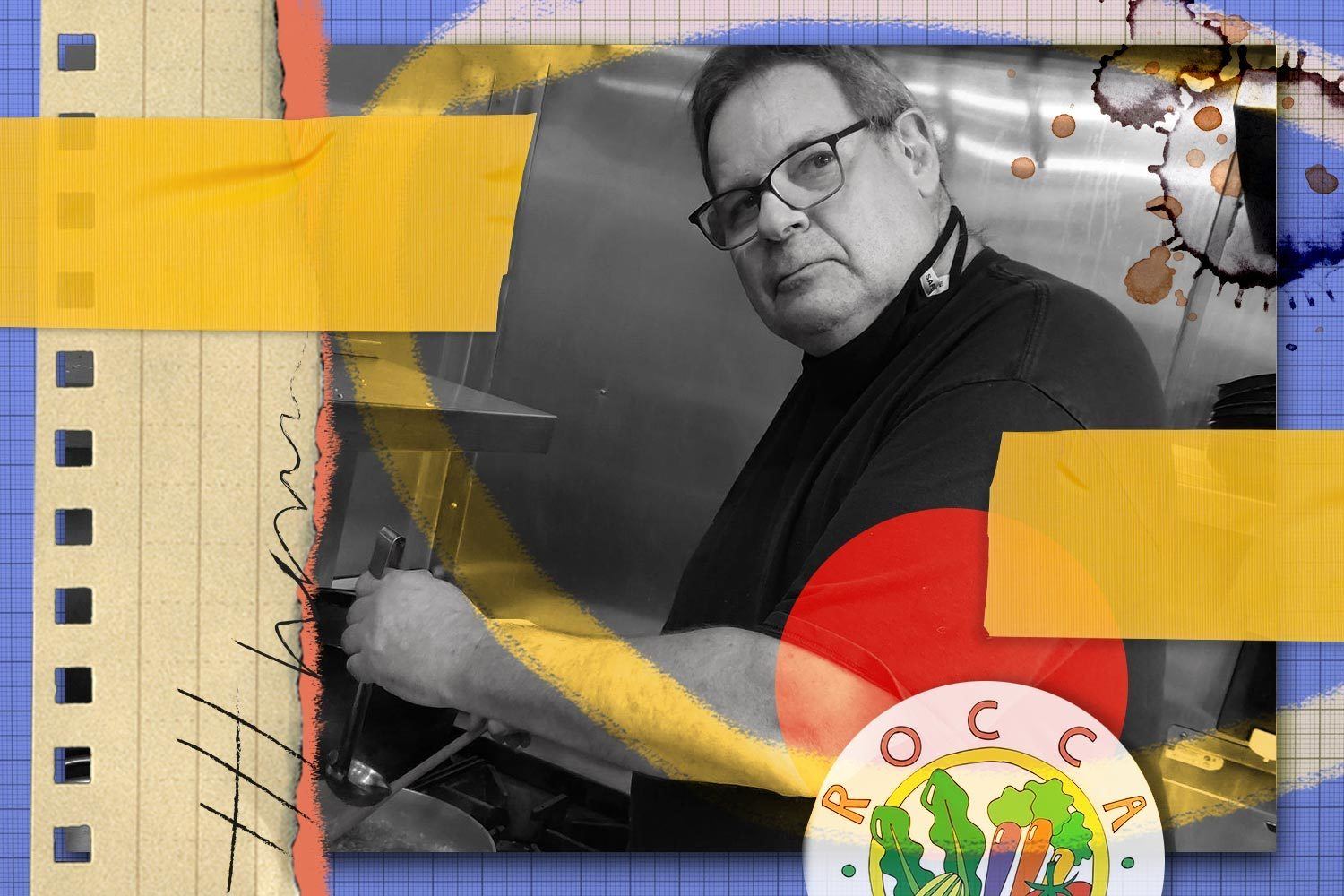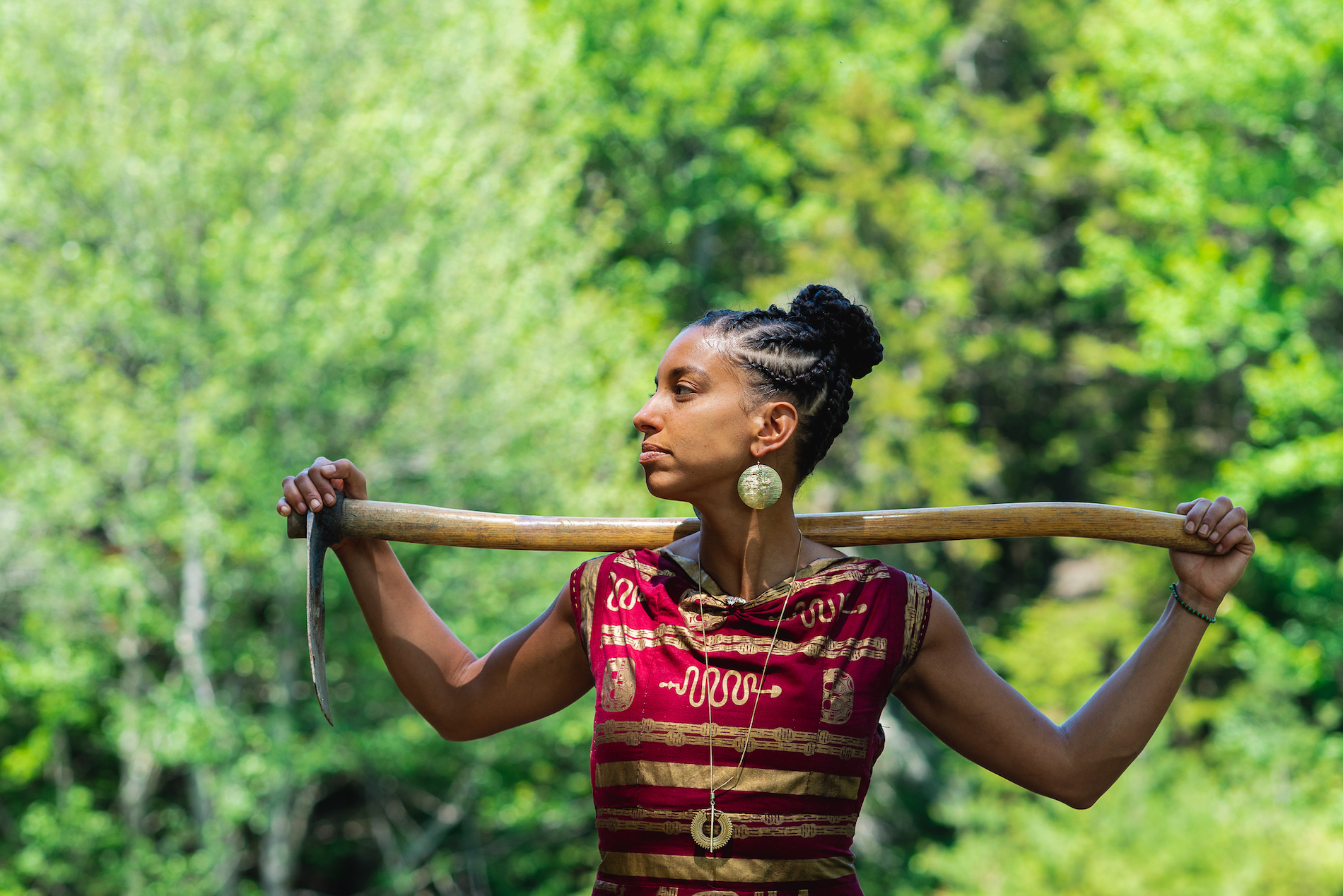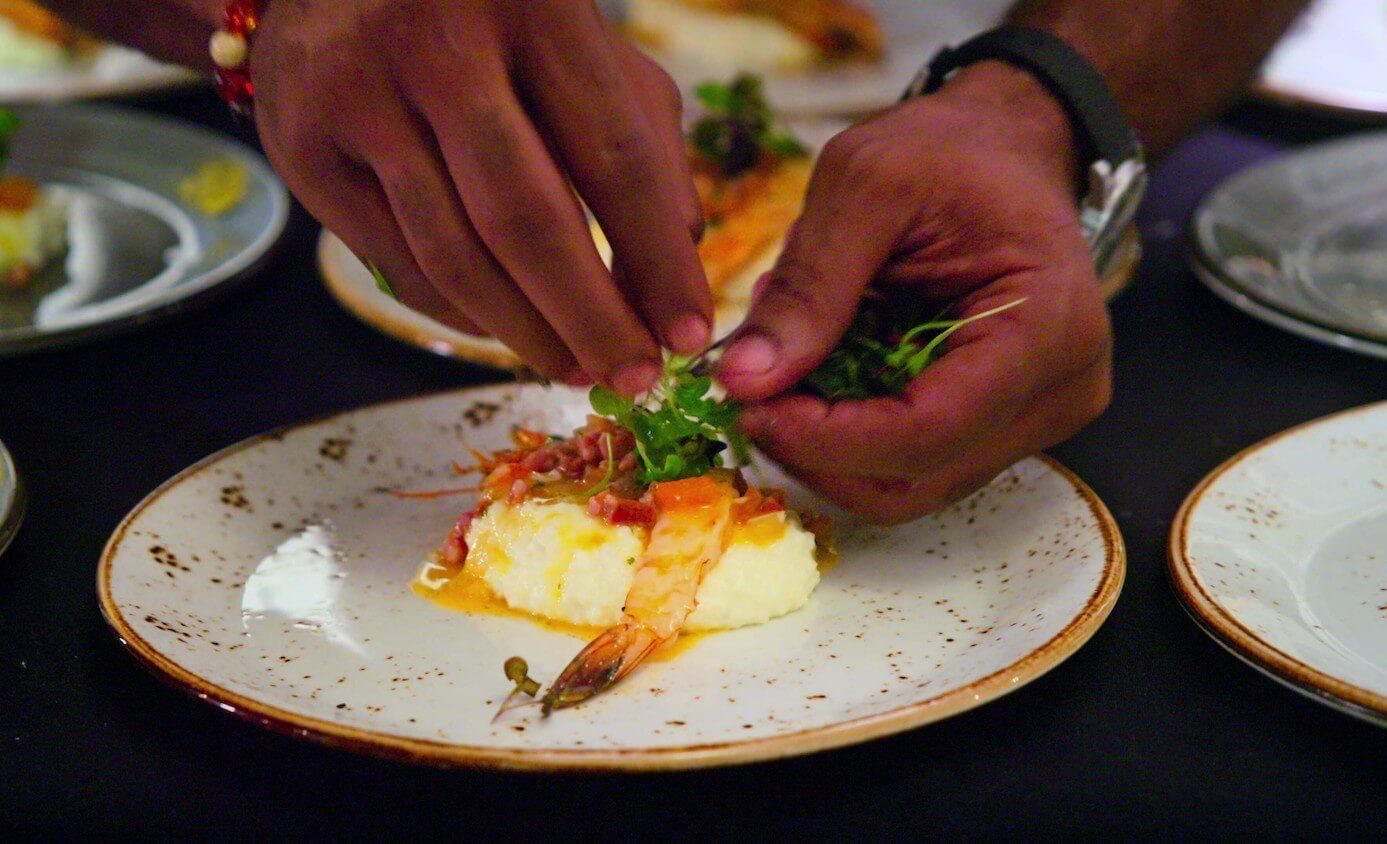
Netflix
When even other Black chefs said I had to go French or Italian to make it, Jessica B. Harris’ writing taught me the centrality of Black creativity and labor to U.S. cookery.
Photo caption: Black minds—and hands—made this country’s cuisine what it is today. But chef Therese Nelson didn’t get that education in culinary school. She got it from Dr. Jessica B. Harris’ High on the Hog book, which she used as a training manual and affirmation.
Like a literary soothsayer, Dr. Jessica B. Harris foretold the birth of her book High on the Hog—and its just-released Netflix docuseries adaptation—in her first cookbook, 1985’s Hot Stuff: A Cookbook in Praise of the Piquant.
In a section on the Western adaptation of global cuisines, she wrote: “Here in the United States the African culinary tradition has not yet been thoroughly explored, but the indigenous cooking of Black Americans has preserved its soul.” It’s one small sentence in a 250-page volume. But it strikes me, with pride and irony, every time I read it. The truth of American cuisine is to be found in Black culture, whose culinary practitioners are roundly dismissed even as they preserve tradition.
When and where I entered
In 2002, I was in culinary school at Johnson and Wales University in Charleston, South Carolina, a port city that was the landing spot for generations of enslaved Africans. There, I began to question the disparity in the ideology of New American cuisine: a change that emphasized fresh, American ingredients; fine dining; influences from global cuisine; and white chefs with European flair. I was training at one of the best hotels in the country, Charleston Place, and its Charleston Grill Restaurant. At that time, fresh, young, and nationally known chefs had the reins. I entered with all sorts of expectations about what I would learn.
While I certainly left with technical tools that still serve me today, the most important lessons I learned were from Mr. Esau Graham. At Charleston Grill, he was the most experienced and intellectual chef in the kitchen, but had the least material and social capital. He’d been there since the beginning of his career. I began to see his long stint there and the shortage of opportunities for him and his peers as a cautionary tale about the seeming impossibility of Black mobility in restaurant work.

In the Netflix docuseries High on the Hog, host Stephen Satterfield and scholar Jessica B. Harris take viewers on a journey from Africa to the Americas. They make the case that Harris has continually made throughout her long career: that there is no American food without Black Americans.
Netflix
Mr. Esau Graham was the keeper of the palate of the Charleston Grill. He was name-checked around the city and in chef Louis Osteen’s books as the culinary core of operations, much like Dora Charles at Paula Deen’s famed Savannah restaurant The Lady & Sons and Dolester Miles at Birmingham’s Highlands Bar & Grill. One of the first things he taught me was how to make duck confit. From butchering the duck to preparing the fat, the care, patience, and attention to detail were heirlooms that he passed to me freely. My tongue still remembers the juniper berries and the bay leaves from that first taste. He was the first point of contact for all the new cooks, but was prep cook by title. He reported to chefs far younger than him and with only a fraction of his knowledge. There was some solace in the fact that he would inevitably outlast them, but they’d move on and often become celebrated chefs elsewhere.
What I came to understand during his tutelage and in culinary school was that Black people were skilled “cooks” but never chefs who commanded the full respect and earning power of their less-skilled white colleagues. The glass ceiling for Black chefs was the ground floor, and even if one Black chef or two made it through the gauntlet, advancement was rarely an option. We were essential to most of the culinary operations across the country, but would never have power and room to excel as credible and visible New American chefs.
Tracking change
To understand this notion of New American Cuisine, you have to look back to the country post-World War II. Soldiers were returning home, and the wartime industries were transitioning from patriotic production and rationing to a new normal. The government began investing in hospitality as a new industry with boundless potential to invigorate multiple business sectors. Throughout the 1950s and 1960s, this effort took the form of strategic workforce development partnerships with organizations like the American Culinary Federation and the National Restaurant Association. That training would take place in newly formed culinary schools like the Culinary Institute of America, founded in 1946. The reform also expanded the work visa program, which imported chefs like Jacques Pépin into the country.
Well into the late 1960s, Black people had been the central workforce in hospitality. Everywhere food culture was happening—from private homes, country clubs, hotels, catering companies, and restaurants—Black workers were making the most out of marginalized jobs. Many of those jobs were intergenerationally held because they were considered the sole province of Black workers. The restaurant, as we know it, didn’t quite exist yet. The outside-home spaces where many Americans ate were outgrowths of slavery and then domestic work. The professionalization of the business turned a majority-Black profession into today’s multitrillion-dollar industry that now has to be introduced to the idea that its foundations lie in Black culture and work.
Black people were skilled “cooks” but never chefs who commanded the full respect and earning power of their less-skilled white colleagues.
By the 1970s, labor reform laws officially shifted culinary artists from domestic workers to tradespeople. This reform also ushered in a whole new ecosystem of food service and media, including restaurant criticism and stepped-up coverage in print and broadcast media.
When I think of this era, I can’t help but think of Vertamae Smart-Grosvenor. In her 1972 book Thursdays and Every Other Sunday Off: A Domestic Rap by Verta Mae, she wrote about the dangers of professionalization, how it devalued the domestics who served the nation’s food before eating out became habit. As food moved into more public spaces, she warned, the legacy of Black cooks and culture keepers would be imminently erased. To my mind, she saw the cherry-picking affectation that is New American Cuisine coming.
New American hoax
Thirty-six years ago, when those words from Hot Stuff were published, the U.S. food landscape was at the height of its New American identity rebrand. This kind of effort would certainly not know what to do with Dr. Harris’ assertions of Black authorship—let alone the seemingly radical idea that Black culture was foundational to American gastronomy.
In 1985, books like Hot Stuff were outliers. Its most notable predecessors came from Smart-Grosvenor and Edna Lewis. We should note that while those women and their books are now revered, they were certainly not given their due at the time. So another 25 years later, when Harris brought the ideas in Hot Stuff to full fruition in High on the Hog, it felt so powerful.
Just a few years out of culinary school, affected deeply from my time in Charleston, I was finding my way as a new cook. I asked myself serious questions about how I would fit into a culinary industry that had little affection for Black identity. Black food was—and remains—compacted into a narrow understanding of “soul food,” a term that only emerged in the 1960s as a statement of Black Power and cultural rebuttal to milquetoast, mainstream America. My training in Charleston only tangentially connected the dots to Black culture in Southern regional fare. The roots should have been clear—in Charleston, of all places, where the colonial city was once the original “Chocolate City” with a Black majority! I was starving for someone to make sense of the disparity.
The New American framing gave chefs cover to crib from the world’s cuisines at will. It also created a rhetorical way to clear the cultural decks and create a narrow echo chamber and flimsy foundation from which to grow a “new” industry.
The New American framing gave chefs cover to crib from the world’s cuisines at will. It also created a rhetorical way to clear the cultural decks and create a narrow echo chamber and flimsy foundation from which to grow a “new” industry. It began the modern American story in the ’70s and ’80s, with scant recognition of who and what came before. It allowed our country—a relative infant on the world scene—to recklessly abandon honesty and untether itself from history.
I heard the message loud and clear as a young Black chef cooking in the South, creating with other Black people whose expertise never translated into promotion or accolades commensurate with their greatness. People who could make a perfect velouté and a perfect pot of grits over and over again: We/I didn’t have anything to contribute culturally. Back then, I met Black chefs so conditioned to remove themselves from their work that they would zealously tell me how we were all chefs first. If I were ever going to be part of this New American experiment, they advised, I would have to put away Black foodways and keep current with the latest French and Italian.
Cultural receipts
In the 1980s, Dr. Harris was already a decade into her writing career, distinguishing herself as a travel editor and restaurant critic for publications like Essence and the Village Voice. That she managed to write for both Black and white publications—and crank out 12 cookbooks exploring the African diaspora—we rarely acknowledge in this moment where we are savoring her work. She traveled the world juxtaposing the evolving U.S. culinary environment with the older, more developed global culinary cultures, particularly in West Africa. So when she wrote that New American Cuisine is going to have to reconsider itself, that assertion came with an equal dose of foreshadowing, intuition, and research.
The first time I read High on the Hog, released in 2011, was a revelation. I didn’t just read Dr. Harris’ words, I felt them. High on the Hog was full of clear logic, deeply rooted scholarship, and unflinching prose. It countered the complicated prism of the “melting pot”—which vaguely included Black Americans, but minimized us in a story of glorious Ellis Island immigrant contribution and fortitude. It disrupted everything I’d been taught about New American Cuisine by simply moving its center into Black culture and mining history for receipts. The book made plain that there was no American cuisine without Black people.
That she managed to write for both Black and white publications—and crank out 12 cookbooks exploring the African diaspora—we rarely acknowledge in this moment where we are savoring her work.
She argued persuasively that we must reframe enslaved people as experts brought to this country for skilled labor and to see resistance in their culinary lives. She demanded that we assign dignity and agency to the New Orleans praline woman and the Charleston sweetgrass basket weaver as entrepreneurs and community stakeholders. Black caterers, Pullman porters, and restaurateurs gave this country a culinary identity long before white restaurateurs went in search of one.
High on the Hog was the training manual I wish I’d been armed with in Charleston, and it is the book that in many ways has created the expansiveness of Black culinary exploration this past decade has brought.
Digesting the docuseries
Now we have the four-part High on the Hog Netflix docuseries, which brings the first half of the book to vivid life. Directed by Roger Ross Williams (the first Black director to win an Oscar in 2010 for his documentary Music by Prudence), produced by Fabienne Toback and Karis Jagger, and charismatically hosted by Whetstone Media’s Stephen Satterfield, it is that still-rare bird: a series about Black people and culture made by a Black production team.
It’s hard to trace influence. But it’s clear that Dr. Harris’ work has resonated internally for Black culinary creatives. She told us that black culinary history matters. I see her impact in books like Michael Twitty’s The Cooking Gene and Lazarus Lynch’s Son of a Southern Chef, and in accounts like Adrian Miller’s Soul Food and Toni Tipton-Martin’s The Jemima Code. It’s in Kristi Brown’s Seattle restaurant and bar Communion. There, she has made her restaurant a community trust in the fashion of Black women like Georgia Gilmore and Princess Pamela, who literally made their own independent-restaurant models in their homes in civil-rights era Montgomery, Alabama, and Manhattan.
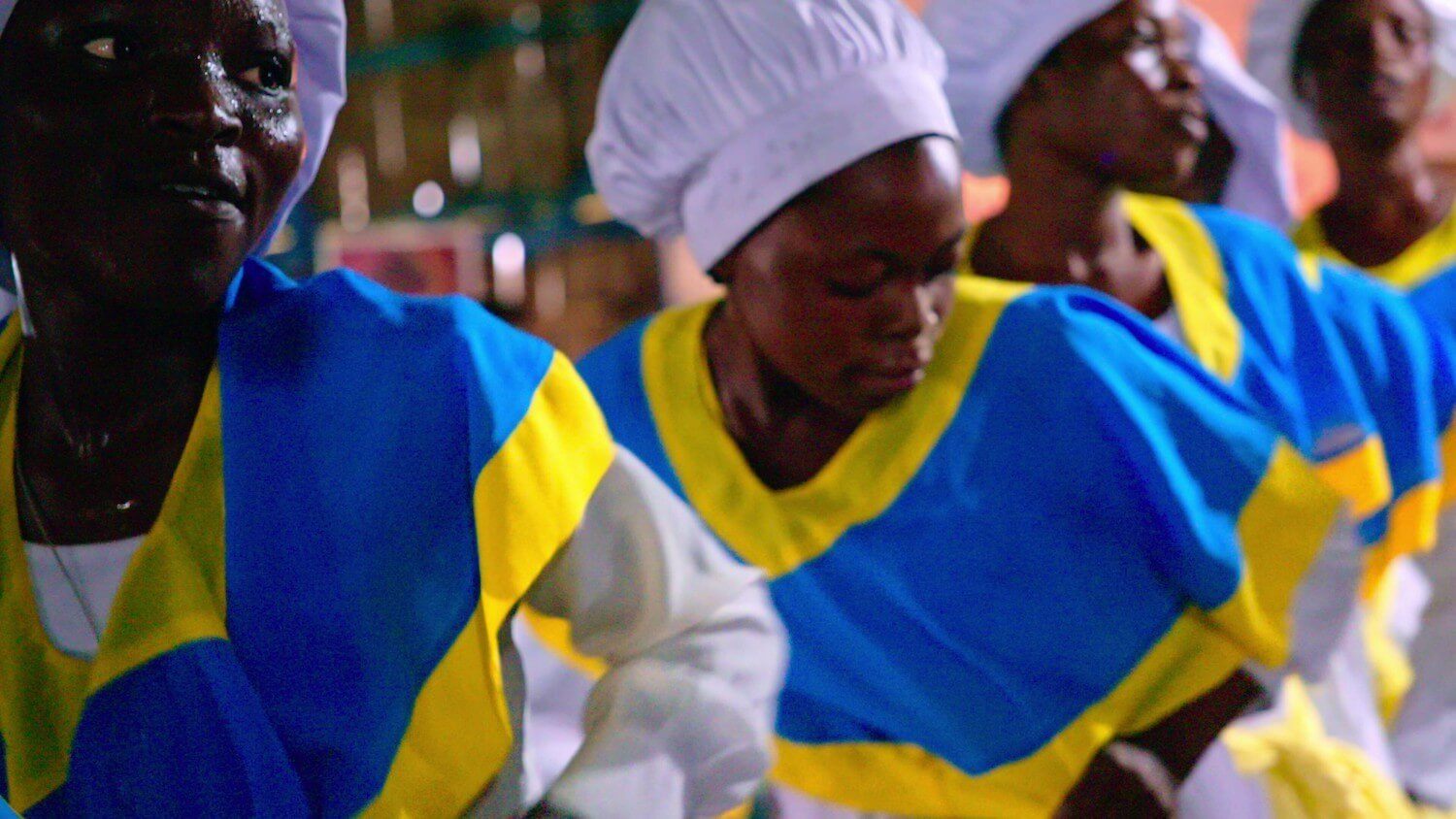
West African foodways and cultural products traveled with enslaved Africans via the Middle Passage, seeding a U.S. culinary landscape that has lost touch with its global diasporic roots.
Netflix
Mashama Bailey’s The Grey in Savannah brings Lowcountry cuisine to the fine-dining space, drawing so much inspiration from Edna Lewis that Bailey now runs the foundation bearing Lewis’ name. Omar Tate of Honeysuckle Projects in Philadelphia makes a whole practice of using research, travel, and historical context to craft each dish of his famed pop-ups. Each of these chefs benefited from the affirmative reframing of American gastronomy and have used Dr. Harris’ work to create the culinary world they wanted to see.
It’s a powerful thing to have your culture reflected back to you in ways that center you. So often, Black culture is evaluated by how it’s received by other people, its core purpose contorted for outsiders’ entertainment and commodification. So here we are, after decades of strategic planning to build a restaurant sector, talking about how Black culture, chefs, and influence fit into a profession Black creativity and hands built.
It’s taken two Obama presidential terms, Trumpism, an evolving food media landscape, and too many Black deaths to count to convince the food establishment that Dr. Harris was right this whole time. What will the food world do with this “new” information as it fights to reckon with its conscience morally, economically, and culturally? I don’t have any answers, but I hope Black creatives go even harder to claim the agency to tell fully formed and hyperpersonal stories. That “High on the Hog” won’t be the only docuseries that takes us seriously, as descendants of those who created American cookery in slavery and freedom. That chefs, writers, farmers, winemakers, mixologists, and especially students feel deputized to advance the narrative Dr. Harris has given us. And make new ones. If we do, maybe our legacy won’t be so easily dismissed in the next wave of culinary change. History tells us it’s already on the way.
